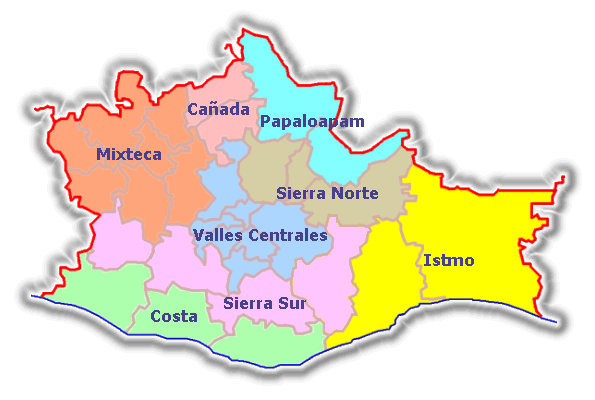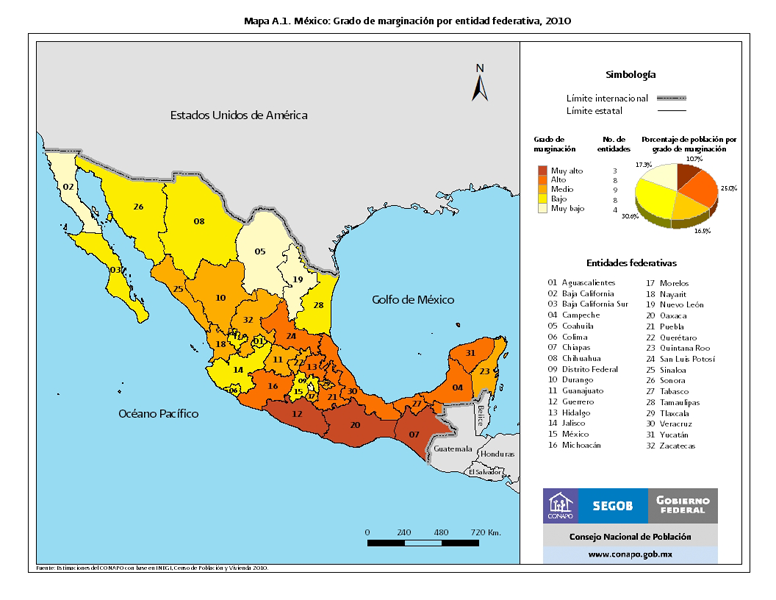We need your support. Your contribution makes it possible for SIPAZ to continue offering international accompaniment in the regions of Chiapas, Oaxaca and Guerrero.
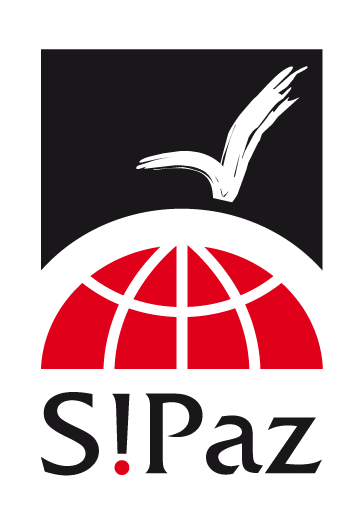
Facts about Oaxaca
Location:
The state of Oaxaca borders the states of Guerrero and Puebla, to the north; the states of Chiapas and Veracruz to the east; and the Pacific Ocean to the south. Oaxaca has a surface area of 93,364 km2, which represents 4.8% of the country’s total area.
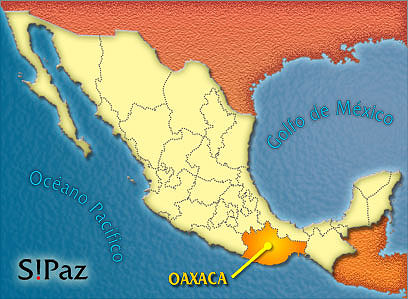
of the country’s total area
Regions And Municipalities:
The state of Oaxaca is divided into 12 regions:
Cañada, Mazateca, Mixteca Baja, Mixteca Alta, Chinantla, Sierra Zapoteca, Región Mixe, Valle de Oaxaca, Mixteca de la Costa, Sierra del Sur, Istmo and Chimalapas.
The capital is the city of Oaxaca de Juárez. The state has 570 municipalities, which account for almost 25% of the national total. 418 of them elect their authorities through a traditional system, in assemblies.
Oaxaca is one of the states with the lowest population density, with 42 people/ km2, while Chiapas has 61 people/ km2.
Indigenous Peoples :
In the country in terms of indigenous population
are indigenous (using as a criterion people over three years of age who speak an indigenous language)
If the criterion of indigenous self-ascription is used
The state of Oaxaca ranks first in the country in terms of indigenous population: out of 3,967,889 inhabitants in the state, 32.2% (1,205,886 people) are indigenous (using as a criterion people over three years of age who speak an indigenous language).
If the criterion of indigenous self-ascription is used, 2,607,917 (65.7%) of the population is considered indigenous, being the state with the largest volume of population in this ethnic category in the country.
Main speakers of indigenous languages over three years of age:
405,583 Zapotecos (33.6% of the indigenous population)37%
266,767 Mixtecos (22.1%)22%
179,856 Mazatecos (14.9%)15%
114,673 Mixes (9.5%)10%
107,431 Chinantecos (8.9%)9%
50,697 Chatino (4.2%)4%
Sources: INEGI Encuesta Intercensal 2015; Comisión Nacional para el Desarrollo de los Pueblos Indígenas (CDI) 2018.
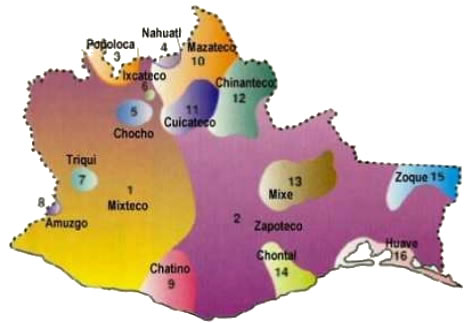
Using the language criterion, there are 245 municipalities in the state where more than 40% of the population are indigenous language speakers, which represents almost half of the total municipalities in Oaxaca. The Sierra Norte is the region with the highest number of indigenous language speakers (seven out of ten inhabitants. The region with the lowest percentage is Valles Centrales, where only two out of ten have this characteristic. There are several municipalities where more than 98% of the population speaks an indigenous language, such as San Juan Petlapa, Santa Catalina Quierí, Mixistlón de la Reforma, San Juan Yatzona or San Lucas Camotlán.
Sources: INEGI Encuesta Intercensal 2015.
Indigenous Uses and Customs :
“Indigenous communities continue to practice their own forms of government and are governed by their regulatory systems, known as uses and customs. This term does not refer to an informal code of religious, cultural and social beliefs, but to a system of collective norms that has been built in indigenous communities over the centuries, which is not infallible but has proven its flexibility, coherence and the ability to coexist with the modern system of government. One of the fundamental axes that govern the current indigenous life of Oaxaca is the community assembly. In it the members recognize each other face to face as members of the community. The meetings are attended by all the heads of the family, men and women, and they deliberate with a voice on the affairs of the people to reach consensus. The assembly is chaired by elected authorities. There are different levels of assemblies: the broad domestic, the neighborhood or section, the council, the civil, the religious and the agrarian type. The community assembly is the product and culmination of these previous assemblies; it is in fact the highest indigenous authority. Political life in the indigenous communities of Oaxaca is organized through the cargo (duty) system. This system dictates that all men, from youth to old age, have the obligation to provide a free periodic service to their people by occupying positions within the municipal organization.”
Sources: www.gobiernodeoaxaca.gob.mx
On August 30th, 1995, the State Congress approved an amendment to the Code of Political Institutions and Electoral Procedures of Oaxaca. The objective of this reform was to recognize the possibility of electing municipal authorities according to indigenous uses and customs. In March 1997, Articles 25, 29 and 98 of the Local Political Constitution were amended to make the recognition of the electoral rights of the indigenous peoples of Oaxaca more explicit. Finally, in 1998 the Law of Rights of the Indigenous Peoples and Communities of Oaxaca was enacted. It is considered the most advanced in the country in terms of indigenous rights.
Afro-Descendent Population :
In Oaxaca, those who recognize themselves as Afro-Mexicans amount to 196.2 thousand people and represent 4.9% of the population of the state. There are more women who declare themselves from this population (102.6 thousand) than men (93.6 thousand).
Source: INEGI Intercensual 2015
Social Inequality :
According to the socio-economic indicators of the National Population Council, Guerrero, Chiapas and Oaxaca, in that order, make up the states with the highest marginalization at national level.
Sources: CONAPO 2010
In 216 municipalities
The most affected regions are the Sierra Sur, La Cañada, Papaloapam and the Isthmus.
Sources: INEGI Intercensual 2015
Income :
- 5 million people were living with an income below the extreme poverty line (37.4%).
- 8 million people were living with an income below the poverty line (69%).
- In Oaxaca, the state with the highest degree of labor informality, 7 million inhabitants are employed, of which 74%, equivalent to 1.3 million, earn from zero to 5,300 pesos per month, that is, two minimum monthly wages. This implies that 62% of the employed population receives an income lower than the cost of their basic food needs.
- 3% of households receive at least one government program.
- 7% of the active population works in the primary sector; 20.1% in the secondary sector; and 48.22%, in the tertiary. The strong participation in agricultural activities is even greater in the indigenous communities of the state where the subsistence agriculture model dominates, which does not produce agricultural surpluses with which to have significant economic income.
Sources: Índice de Tendencia Laboral de la Pobreza (ITLP), CONEVAL 2018; Encuesta Nacional de Ocupación y Empleo INEGI 2018
- In 2015, according to the Bank of Mexico, remittances sent by family members living in Mexico were 1,288.7 million dollars (6th place in the country, since they accounted for 5.2% of the national total). 7% of households receive remittances from people living abroad and 7% from people living in another state.
Sources: INEGI Intercensual Survey 2015.
(%) living with an income below the extreme poverty line
(%) living with an income below the poverty line
Right to Adequate Housing :
A high percentage of households do not meet the minimum conditions for adequate housing with very strong variations depending on the municipality
Lack of quality and space in the home
Lack of access to basic services in housing
of homes have piped water
of houses have dirt floors
Lack a drainage system
of houses have electricity
of homes in the state are considered to contain some level of overcrowding
of households have a computer
have a cell phone
have Internet access
of families have a car or truck
of families have a television
Sources: CDI, Indicadores socioeconómicos de los pueblos indígenas de México, 2015; INEGI Encuesta Intercensual 2015; CONEVAL 2018; encuesta Nacional sobre Disponibilidad y Uso de Tecnologías de la Información 2018.
Education :
Schooling
In Oaxaca, for many people, especially indigenous people, and even more so, women, the right to education is not fulfilled for various reasons. Conditions of poverty force children to work to improve the family economy. In addition, many isolated communities do not have the adequate infrastructure to facilitate education (lack of classrooms, furniture, books, basic services, lack of teachers, overcrowded classes). 27.1% of the population suffers from lack of educational.
Of the population over 15 years :
do not have any level of education
of the population aged 15 and over
has incomplete basic education
The average grade of schooling is
which is equivalent to just over the first year of high school
(second last nationwide behind Chiapas)
The average level of schooling for the indigenous population in the state is
which means that the majority do not complete primary education
Sources: INEGI Intercensual Survey 2015; CONEVAL 2018
Illiteracy
rank in the country
after Chiapas and Guerrero, in terms of illiteracy
of its population
being illiterate
32 municipalities of Oaxaca have an illiteracy rate higher than
of their population
percentage of illiteracy in the indigenous population aged 15 years and over
Women who cannot read or write
Men who cannot read or write
of the indigenous population over three years old is monolingual
Health :
Malnutrition
of the population suffers lack of access to food
At least
According to UNICEF, this places Oaxaca in second place with the highest nutritional risk in the country
Malnutrition is the
Between 2010 and 2017, more than 5,000 people died of hunger in the state.
Source: CONEVAL 2018; “The State of the Most Vulnerable Children and Youth in Mexico 2015”, World Vision México; INEGI 2017.
Mortality
In general, Oaxaca occupies
place nationally with the highest mortality rate
at six deaths per thousand inhabitants
The infant mortality rate is
deaths of children under one year of age per thousand live births
with Oaxaca being second from bottom at national level.
The average in OECD countries is 3.9
Maternal mortality in Oaxaca is
deaths from complications of pregnancy, childbirth or the puerperium for every 100,000 births
(eighth place nationally)
Source: INEGI 2015 and 2016
Access to health services
Lack of access to health services affects
of the population
In Oaxaca, there are
for every thousand inhabitants
and one specialist for every 2,222 inhabitants
(about two times less than the national average)
In the last ten years, the percentage of the population entitled to health services increased from 22.6% in 2000 to 56.0% in 2010, and to 66.5% in 2017. Despite the progress made in this area of entitlement, affiliation to a system, institution or program does not guarantee, as necessary, that access to services is carried out with opportunity and quality, CONEVAL acknowledges.
Sources: Diagnóstico del Derecho a la Salud CONEVAL 2018
Land :
Oaxaca continues to be one of the states with the smallest urban population, since only 25.6% of its population resides in localities with 15,000 or more inhabitants. However, the territorial distribution of the population is characterized by its concentration in a few areas and its dispersion in a large number of localities with less than 2,500 inhabitants. 51.6% of the population resides in localities that do not exceed this number of inhabitants. The large cities of the state are concentrated in the Valles Centrales, the Papaloapan Basin and the Isthmus.
Source: Intercensual Survey INEGI 2015.
A Conflict of Visions
The concept of land held by the indigenous peoples is different from that of the mestizo population. The indigenous peoples continue to view the land as whole and sacred (“Mother Earth”), to be held collectively and not for sale. In Mexico, ejidos and communal lands have been the dominant form of landholding:
EJIDOS
each ejidatario, member of the ejido, receives a parcel of land and all decisions pertaining to the ejidal land have to be made by the entire assembly of the ejidatarios.
COMMUNAL LANDS
the land belongs to all members of the community and, as a result, the benefits of the land are distributed among all members.
Of the 9 million 536.4 thousand hectares of territory owned by the state, 7 million 784.6 hectares are social property. That is to say, 81.3% of Oaxacan territory is ejidal or communal lands.
Souce: Registro Agrario Nacional 2018
Agrarian Conflicts
The existence of a variety of systems of property has contributed to the proliferation of agrarian and territorial conflicts. The state already has a high rate of deaths, injuries, displaced and imprisoned, caused by agrarian conflicts.
By 2018, according to the General Secretariat of the Government of the state of Oaxaca, there were more than 400 agrarian or border conflicts in force, mainly in the Valles Centrales, Mixteca and Sierra Sur regions.
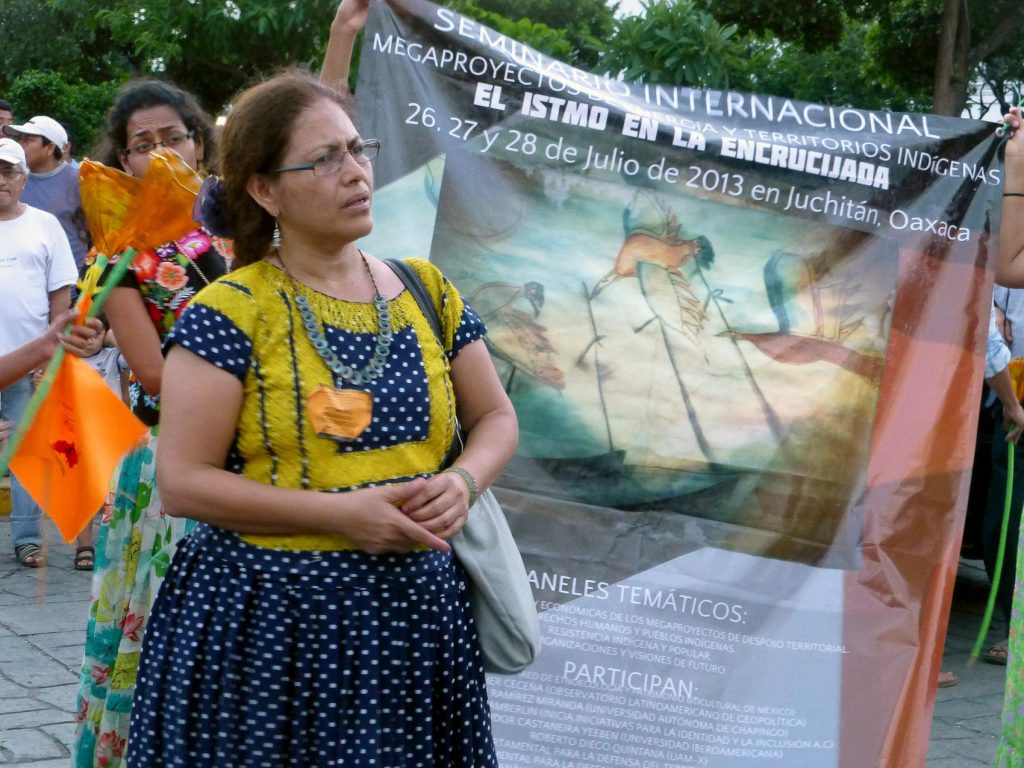
Agrarian conflicts arise:
- Due to the lack of land. when the “agrarian frontier” has already been exhausted, a phenomenon affected by population growth, the lack of spaces for agricultural use and the increase in urban areas with their irregular settlements.
- Due to ambiguities and legal voids regarding agrarian rights and titles for decades and even centuries.
- Due to overlapping plans resulting from the delivery of documents altered by the agrarian authorities.
- Over disagreements about territorial boundaries, including interstate boundaries (the case of Chimalapas with the neighboring state of Oaxaca).
- Due to illegal occupations by ranchers and loggers that have the protection and support of the authorities.
- Due to inadequate or negligent responses from the authorities in the resolution of said conflicts.
- Due to concessions of large areas of land to national and international extractive companies that leave the true owners defenseless.
- Due to conflicts within and between social and indigenous groups or organizations.

